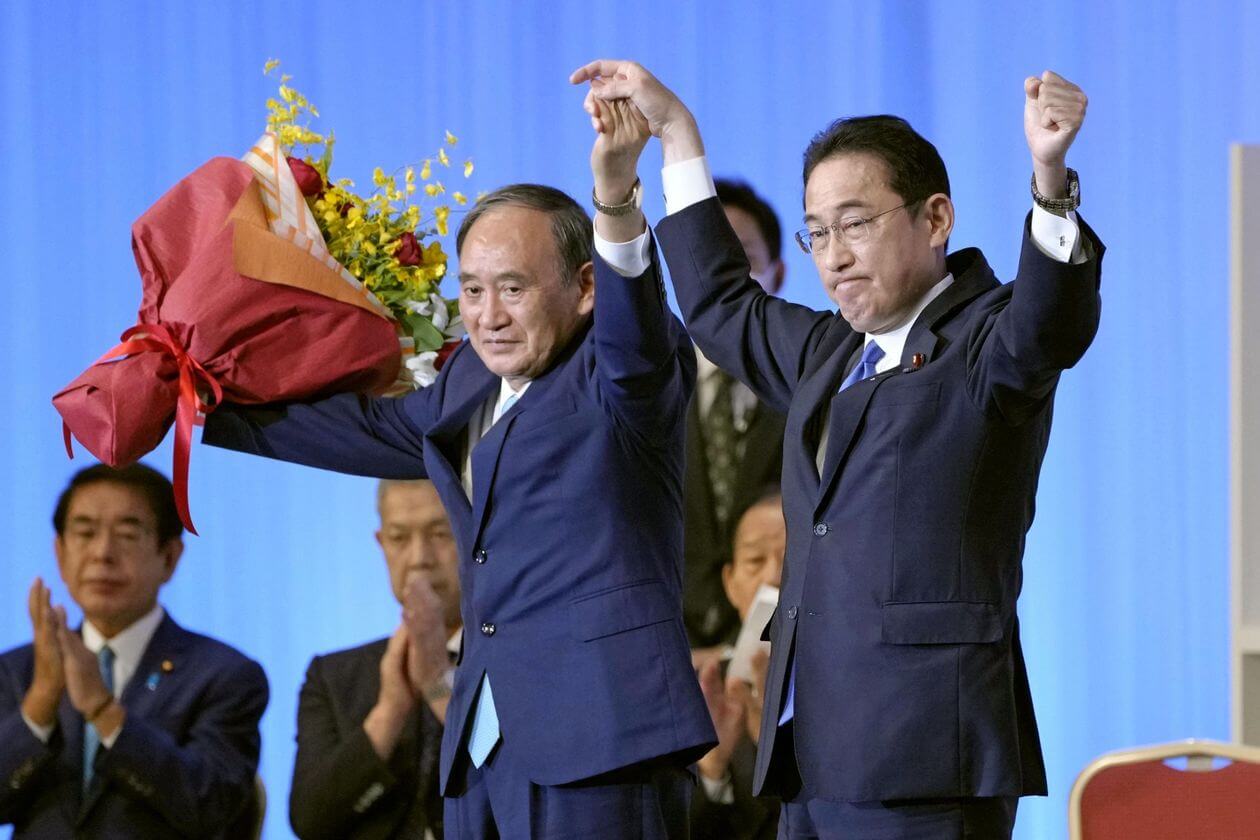Last month, now-former Japanese Prime Minister (PM) Yoshihide Suga unexpectedly announced that he would be stepping down after only a year in office. Following this, ex-Foreign Minister (FM) Fumio Kishida won the ruling Liberal Democratic Party’s (LDP) internal election and was sworn in as the country’s new PM on October 4.
Kishida is a member of the same party as Suga and former PM Shinzo Abe and observers are of the opinion that Japan’s foreign and defence policy will remain largely similar to the past two administrations. This is underscored by the fact that the country’s current foreign minister, Toshimitsu Motegi, and defence minister Nobuo Kishi, are the only two members of the Suga Cabinet who still hold their portfolios within the new administration.
Nevertheless, a few changes are bound to take place, as the rest of the 20-member Cabinet has been completely revamped and rookie ministers with no prior Cabinet experiences have been brought in. Moreover, Kishida himself has promised “drastic” reforms in certain areas.
Mismanagement of the COVID-19 pandemic, a low vaccination rate, prolonged lockdowns, and the decision to host the delayed 2020 Tokyo Olympics despite overwhelming public disapproval (owing to rising COVID-19 cases) were the top reasons for public dissatisfaction and plummeting approval ratings during Suga’s term.
Suga also drew flak for supposedly prioritising the economy over public health. Amidst soaring cases last July, the government rolled out a campaign to promote domestic tourism, claiming that it would have “no impact” on the spread of the contagious virus. Researchers at Kyoto University, though, published a study in January proving otherwise.
Furthermore, even though the Suga administration had purchased more than four times the vaccines that the Japanese population needed, only 2% of the population had been vaccinated around the time of the Olympics. This was attributed to a shortage of trained medical staff to administer doses and an overall public mistrust in vaccines. In fact, lockdowns in the country were only lifted in September, around the same time that the Suga administration was dissolved.
However, the situation is expected to look up with the new administration in control. Kishida is expected to introduce “drastic” measures to combat the COVID-19 pandemic, including significantly increasing testing and vaccination rate. “Our fight against the coronavirus is continuing… COVID-19 measures is the urgent and top priority, and I will handle the problem taking into consideration the worst-case scenario,” the new PM said in his first news conference after taking office. He also said he will review the past administration’s handling of the pandemic and set up a crisis management unit.
In order to combat the adverse economic impacts of the pandemic, Kishida has pledged to introduce a large-scale recovery package. The massive stimulus package is speculated to be worth about 30 trillion yen ($269 billion) and may be offered to help Japanese businesses by the end of this year. During his speech on Monday, he also said that his government will consider cash payouts to non-permanent workers who were hit hardest.
With the COVID-19 situation now easing, Kishida has promised a paradigm shift away from the neoliberalism of the past two decades and announced the onset of a “new Japanese capitalism.” Furthermore, while the details of these plans have not been made public yet, Kishida has pledged to introduce measures to boost people’s incomes by making changes to tax laws and adding additional safeguards to protect small and medium-sized businesses.
Kishida is also expected to reform the country’s immigration policy. The leader has mentioned the need for diversity in the country, which has one of the strictest immigration systems in the world.
Earlier this year, a Sri Lankan woman who had overstayed her visa died while waiting in an immigration detention centre. It was reported that she had received inadequate medical attention even after complaining of her health deteriorating.
In response to the widespread flak that the Suga administration received for the mismanagement of the issue, Japanese lawmakers dropped a controversial bill that would change rules on handling cases of asylum seekers and deportations. The bill proposed changes that would make it easier to deport unsuccessful asylum seekers. The move was heavily criticised by human rights groups, who have long denounced conditions in Japanese detention centres—including how authorities respond to medical emergencies—and urged the government to take more action in terms of accepting refugees.
Given that Kishida is from the same party as Suga and Abe and has retained the foreign and defence ministers in his Cabinet, massive transformations are not expected in terms of foreign policy and defence. However, on the domestic front, early indications suggest that Kishida is planning to usher in changes to public health, economic recovery, and immigration. Moreover, given the widespread public dissatisfaction with the Suga administration, perhaps continuity is not what the Japanese people are looking for or what would serve the best interests of the ruling LDP.
What Changes Can We Expect Under Newly Appointed Japanese PM Kishida?
Japan's new leadership comes at a time where a lot is expected from the government, domestically and internationally.
October 8, 2021

SOURCE: REUTERS
